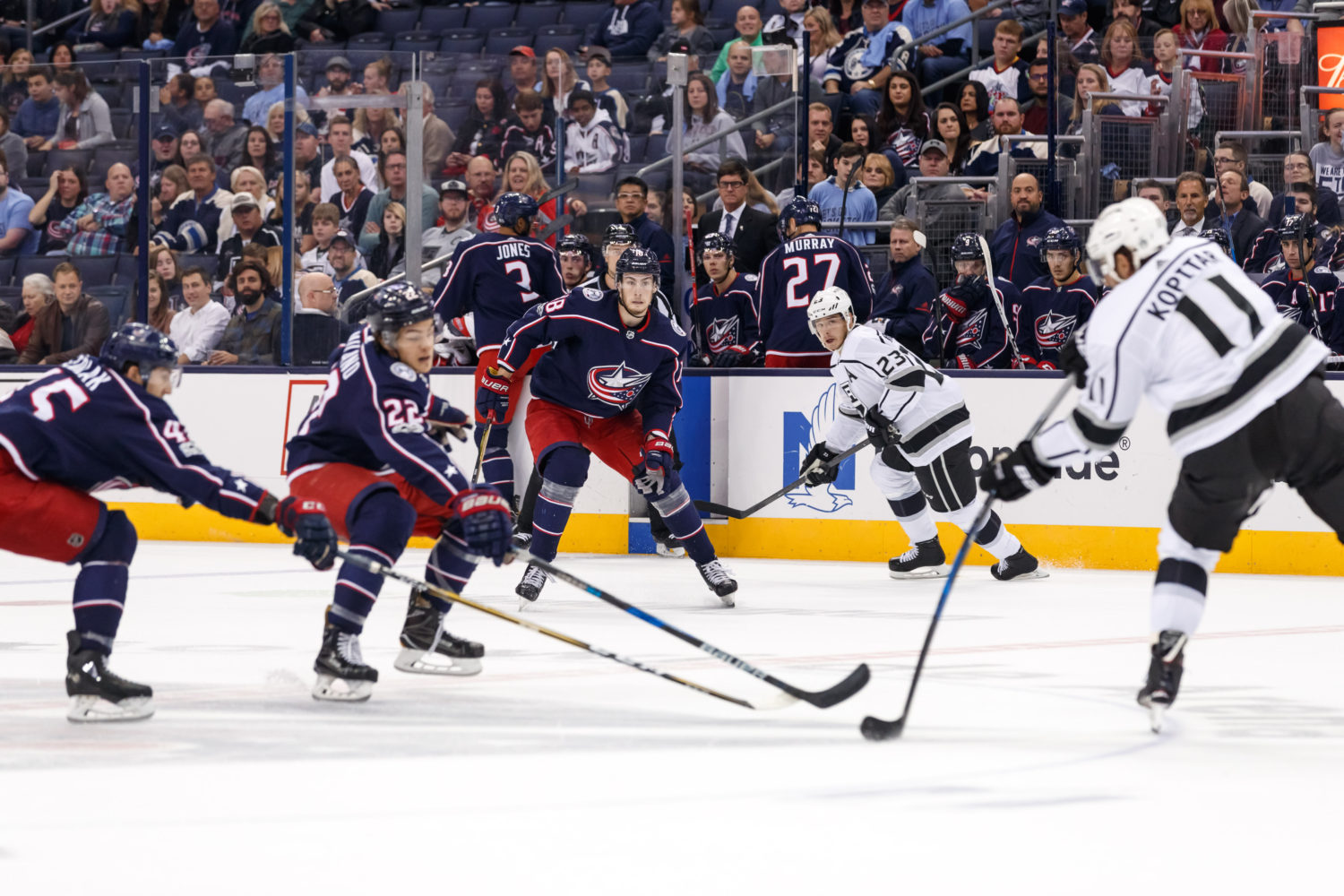Allow me to present a new LA Kings Insider recurring feature – one that has actually been in the planning stage for over a year. During the season, whether on social media or in LAKI commenting, I get asked questions about certain aspects of the team’s play, travel, logistics and organizational structure. I try to answer these questions the best I can, but thought, ‘why not get the answer from someone more learned and ask a player?” And thus begins LAKI’s Teach Me series, which will regularly ask a player on the team about an aspect of their profession or role that may not immediately be known by the general, hockey-watching public. We’re planning on tackling a ton of topics that might not otherwise be germane to the daily question-and-answer scrums that take up so much of our time between 11 am and noon. What is getting traded like? How would you describe playing in Montreal? What kind of a teammate was Colin Fraser? How do you deal with reporters and the media? How are rookies treated? How do nicknames stick? All of these topics – and many more – will be covered in the Teach Me series.
To kick things off, we’re going straight to the captain. Anze Kopitar is a two-time Stanley Cup champion, a two-time Selke Trophy winner and a 2018 finalist for the Hart Trophy. How much more of an introduction would you like? He’s Kopi to the fans, Kop to his teammates, and the league’s most defensively attuned elite center. Having played under Marc Crawford, Terry Murray, Darryl Sutter and John Stevens, I asked Anze earlier today to describe the Kings’ systems, and their evolution, from the eyes of a first line center. Here’s Teach Me: Kings Systems and Breakouts.
Anze Kopitar, on the Kings’ systems, and how they incorporate centers:
As a center, I think the first word that comes to my mind is ‘responsible.’ Obviously, being a center, you’ve got to play within the dots in the middle of the ice in taking care of all three zones. I think a big part of the Kings’ system is an emphasis on the centermen being in the middle of the ice and just kind of connecting all four other guys on the ice and making sure that triangle is always intact and in place, whether that’s starting in the defensive zone, how you play with your defensemen and how you communicate with your goalie, too – all that stuff. Just coming up the ice, maybe sometimes when you’re attacking and the wingers are in front of you, then you just kind of have to see the game and feel the vacated spot, really. Sometimes that’s on the wing, and you’ve got to bust your ass up and get up in the play, and then at the same time, in the offensive zone, again, it’s a triangle thing where you’ve got to play the support game, always in the back of your mind thinking about going on defense eventually. That’s about it.
Kopitar, on whether centers remain low in the zone when receiving the puck during breakouts:
Yeah. We’re using the saying of ‘touching the blue paint’ where the center comes pretty much through the crease on all the breakouts and stuff. In all honesty, that’s really the best way to come, because then you know you’re moving it in the right direction and you can generate speed from there because usually the other guy on the other team is a little bit higher because he wants to make sure he’s above you, which gives you a couple extra feet to make your move, get your mind straight of what you’re going to do and have a half-second more to make the play.
Kopitar, on how these schemes evolved from Darryl Sutter to John Stevens:
I think that actually goes further back than Darryl. It’s actually with Terry Murray, too. He was the guy that was really stressing that all the time, how we’ve got to be low and supporting the puck everywhere. Darryl came in and he had his own ideas, but the basic was still coming lower and really supporting the puck. John is really no different – it’s being responsible, connected. All five guys, plus the goalie in some cases. Having a presence in the middle of the ice makes it a big difference throughout the game.
Kopitar, on accumulating 92 points while remaining responsible and in Jeff Carter’s absence:
I certainly felt really good to start the season. I think for me and for a lot of players around the league, confidence is a huge part. You have a good start and your confidence just grows and grows, and obviously, me, Alex and Brownie really hit it off, which was great, and we just kind of went from there, really. Once you get up there and you feel confident and comfortable and you know what the other two are doing, everything just kind of slows down and you feel like you have an extra second to make a play, even when you’re playing at a really high pace. That’s a very nice feeling to have when you’re on the ice.
-Lead photo via Adam Lacy/Icon Sportswire


Rules for Blog Commenting
Repeated violations of the blog rules will result in site bans, commensurate with the nature and number of offenses.
Please flag any comments that violate the site rules for moderation. For immediate problems regarding problematic posts, please email zdooley@lakings.com.